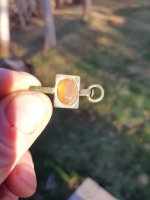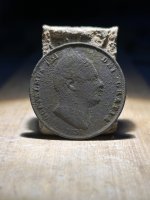rgb1
Sr. Member
- Nov 24, 2013
- 295
- 769
- Detector(s) used
- 2 whites 1 garett
- Primary Interest:
- All Treasure Hunting
i believe swift had 3 groups of mines it seems he did not give many discriptions for his upper minesthe only thing i have found is basicly for the lower or west mines he did make reference to the head waters of sandy going up the levisa fork yet no discriptionsof area he went to i found mines near one of the forks within 4or 5 miles i also found a table top he discribes this is my avatar it is several miles south of the mines also 5od 10 miles below this i found a french mine on a creek that runs in an easterly direction and flowes into a larger stream going westerly i was told that at one time there was 2 smelters in a bottom a quarter mile away which was removed for farming it seems to me mabey these could be the upper mines or maybe not the surounding area does not fit his discriptions so either these are not his or  . give me an idea . rgb1
. give me an idea . rgb1
 . give me an idea . rgb1
. give me an idea . rgb1




